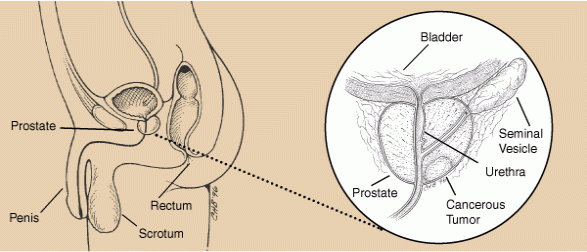Study finds 20 biomarkers of prostate cancer

Breakthroughs in prostate cancer research and treatment have recently been revealed by studies published. One study discovered 20 biomarkers and another offered a test that changes the way the third-most common cancer in the US is diagnosed and treated. There are about 200,000 prostate cancer patients in the US.
The first study, published in the July issue of the Journal of Clinical Oncology, had researchers at the Thomas Jefferson University review the clinical records of almost 400 males who underwent radical prostectomies. The research led to the identification of 20 genes, or biomarkers, linked with prostate cancer, reports Philly.
Among the biomarkers they identified was an aggressive form of the ailment that has a tendency to spread to the lymph nodes or liver even after the patient had undergone surgery. For those who had surgery, another study, published in July in the journal Cell, made by Institute of Cancer Research scientists, could predict the patient’s chance of biochemical recurrence in three years.
Because of that forecast, doctors could tailor postoperative treatments better and create the best therapy for each patient, explains Robert Den, author of the Thomas Jefferson University study and a Jefferson radiation oncologist.
Because of reports of overtreatment, Den said in some cases, the recommended treatment would be limited due to side effects of radiation such as fatigue, damage to the rectum and bladder, diaorrhea and erectile dysfunction.
Meanwhile, University of Bradford professor Richard Morgan collaborated with University of Surrey professor Hardve Pandha to design a £10 urine test that would change the way the ailment is diagnosed and treated. Besides confirming if a man has prostate cancer or not, it could indicate a tumour’s possible size, reports NY City News.
Randox Laboratories is developing the urine test kit which works similar to how a regular pregnancy test works. Its aim is to detect the presence of N2, a protein made by malignant tumours. The amount of N2 in a man’s urine goes up if the tumour size grows further. That would enable a doctor to determine if a patient needs to undergo surgery or not.
There is actually an existing test, the PSA assay, which uses blood sample, to test for prostate cancer but it could not determine the tumour size. Because of early diagnosis and treatment, more than 2 million men with the ailment are still alive, according to the American Cancer Society.
Contact the writer at feedback@ibtimes.com.au or tell us what you think below






